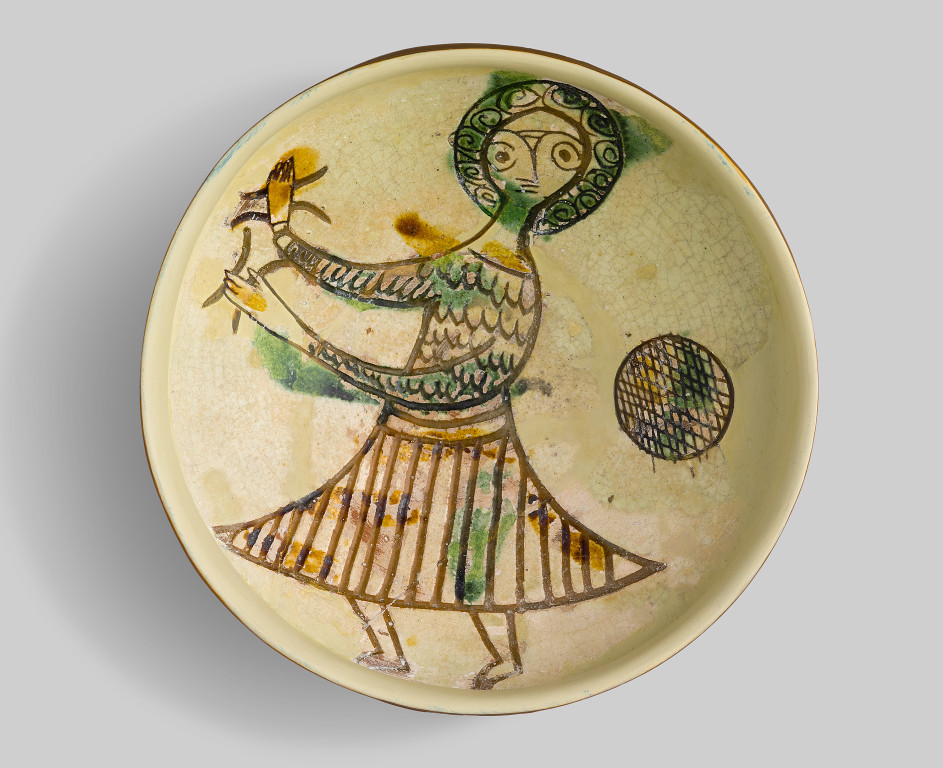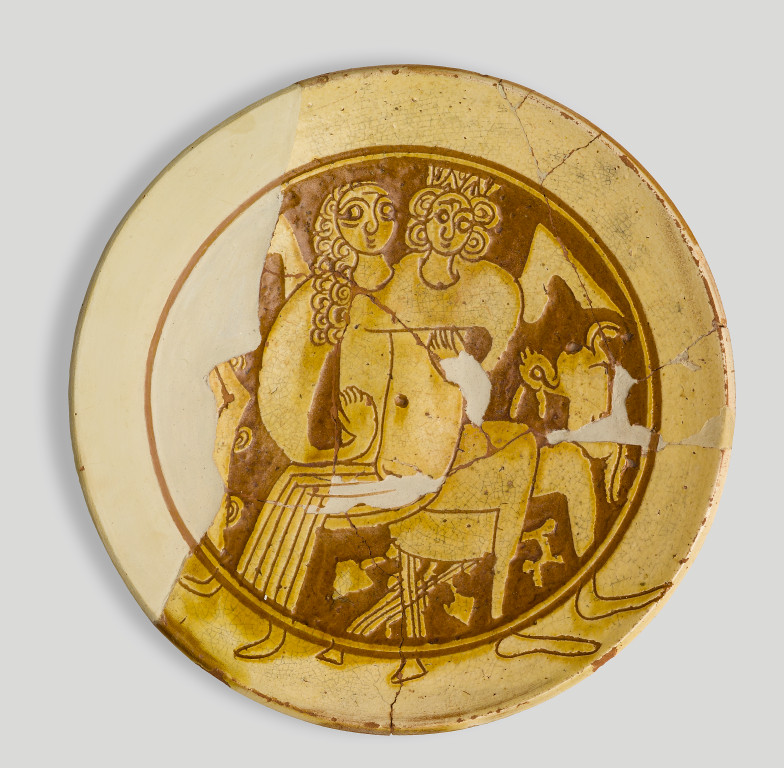Byzantine Ceramics

A curly-haired dancer, whose skirt splays to suggest whirling movement, keeps time with castanets.
Bowl with dancer, Cyprus, Paphos, first half of 13th century, glazed earthenware with sgraffito decoration, Athens, Benaki Museum, Gift of Th. Makridis

Bowl with bird, Thessaloniki, late 13th–early 14th century, glazed earthenware with sgraffito decoration, Thessaloniki, Museum of Byzantine Culture

The rich mane, spotted body, and tail ending in a tuft identify the attacking animal as a cheetah. Often mentioned in Byzantine texts, trained hunting cheetahs could belong only to emperors or people in high imperial favor. This plate was part of the cargo of a shipwreck in the northern Aegean Sea. Excavated in the 1970s, the ship had been carrying mostly ceramic tableware, storage vessels, and lamps, indicating the importance of glazed pottery as trade goods.
Plate with cheetah attacking a deer, mid-12th century, glazed earthenware with sgraffito decoration, Nea Anchialos Archaeological Collection

A man seated on a folding stool embraces the woman on his lap. He may be the Byzantine epic hero Digenes Akritas with his wife Kore or his lover, the Amazon queen Maximo. Their feet and that of the stool are incised outside the central medallion. A rabbit, symbol of lust and fertility, sprints to the right.
Plate with lovers, Probably northern Greece or Eastern Thrace, first half of 13th century glazed earthenware with champlevé decoration, Archaeological Museum of Ancient Corinth